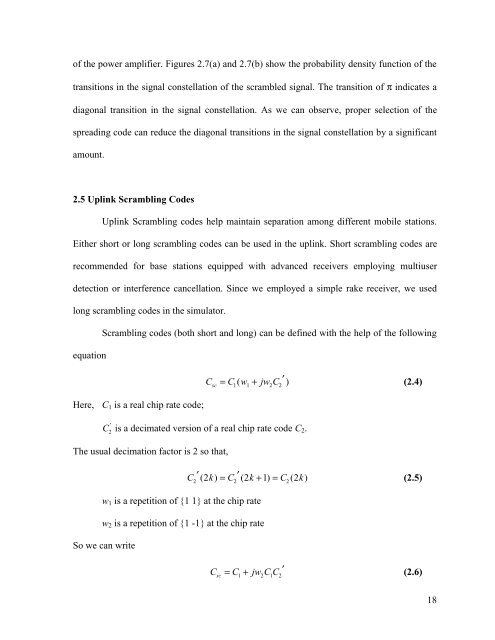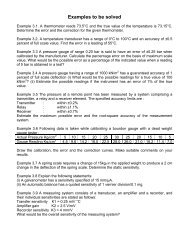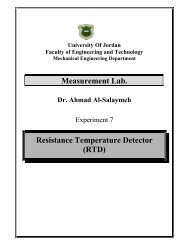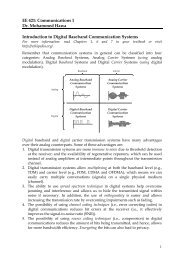Simulation of Third Generation CDMA Systems - Virginia Tech
Simulation of Third Generation CDMA Systems - Virginia Tech
Simulation of Third Generation CDMA Systems - Virginia Tech
You also want an ePaper? Increase the reach of your titles
YUMPU automatically turns print PDFs into web optimized ePapers that Google loves.
<strong>of</strong> the power amplifier. Figures 2.7(a) and 2.7(b) show the probability density function <strong>of</strong> thetransitions in the signal constellation <strong>of</strong> the scrambled signal. The transition <strong>of</strong> π indicates adiagonal transition in the signal constellation. As we can observe, proper selection <strong>of</strong> thespreading code can reduce the diagonal transitions in the signal constellation by a significantamount.2.5 Uplink Scrambling CodesUplink Scrambling codes help maintain separation among different mobile stations.Either short or long scrambling codes can be used in the uplink. Short scrambling codes arerecommended for base stations equipped with advanced receivers employing multiuserdetection or interference cancellation. Since we employed a simple rake receiver, we usedlong scrambling codes in the simulator.Scrambling codes (both short and long) can be defined with the help <strong>of</strong> the followingequationCsc = C w + jw C ‡1( 1 2 2) (2.4)Here,C 1 is a real chip rate code;C 2 ’ is a decimated version <strong>of</strong> a real chip rate code C 2 .The usual decimation factor is 2 so that,C ‡( 2k) = C ‡( 2k + 1) = C ( 2k) (2.5)2 2 2w 1 is a repetition <strong>of</strong> {1 1} at the chip ratew 2 is a repetition <strong>of</strong> {1 -1} at the chip rateSo we can writeC C jw CCsc= + ‡1 2 1 2(2.6)18
















